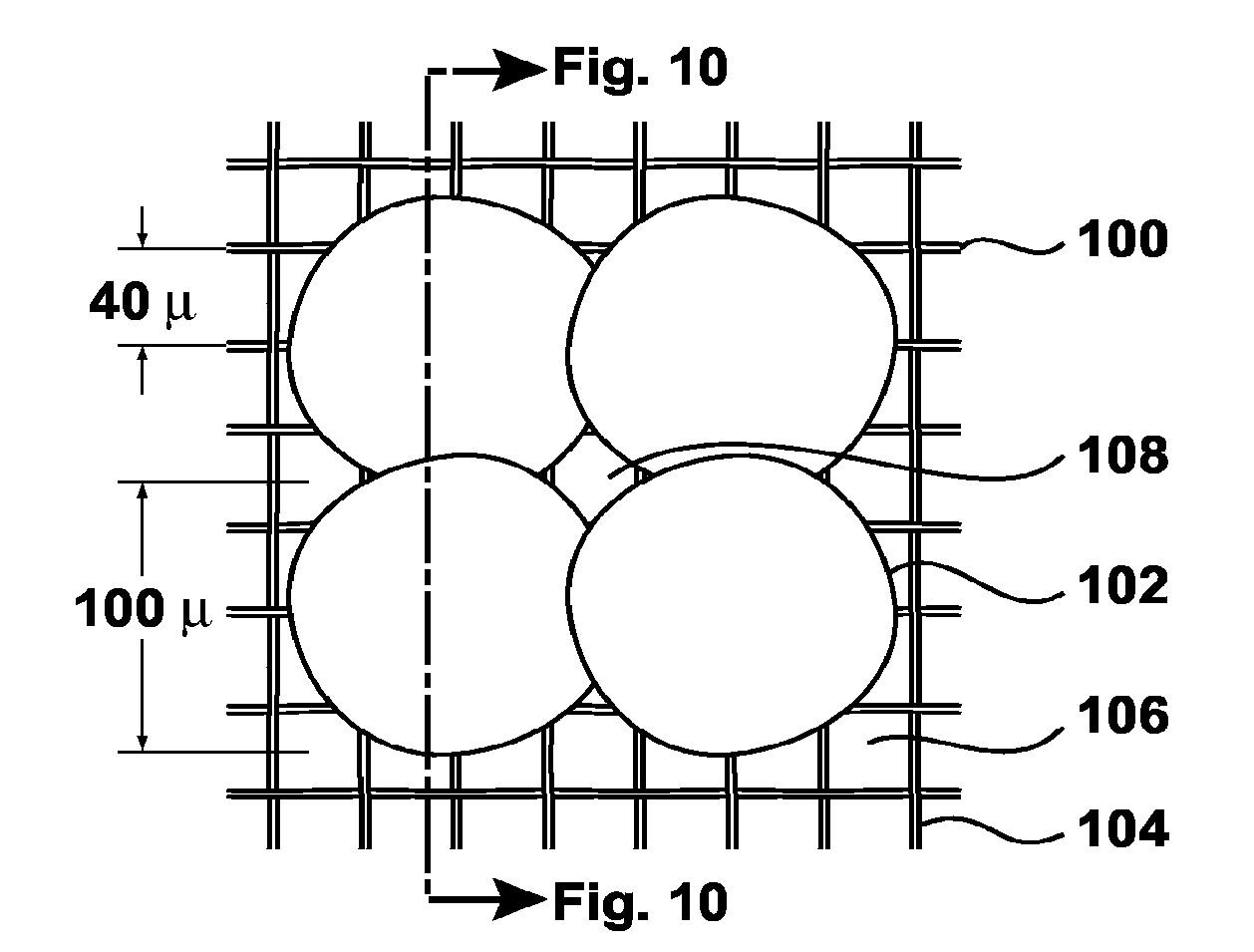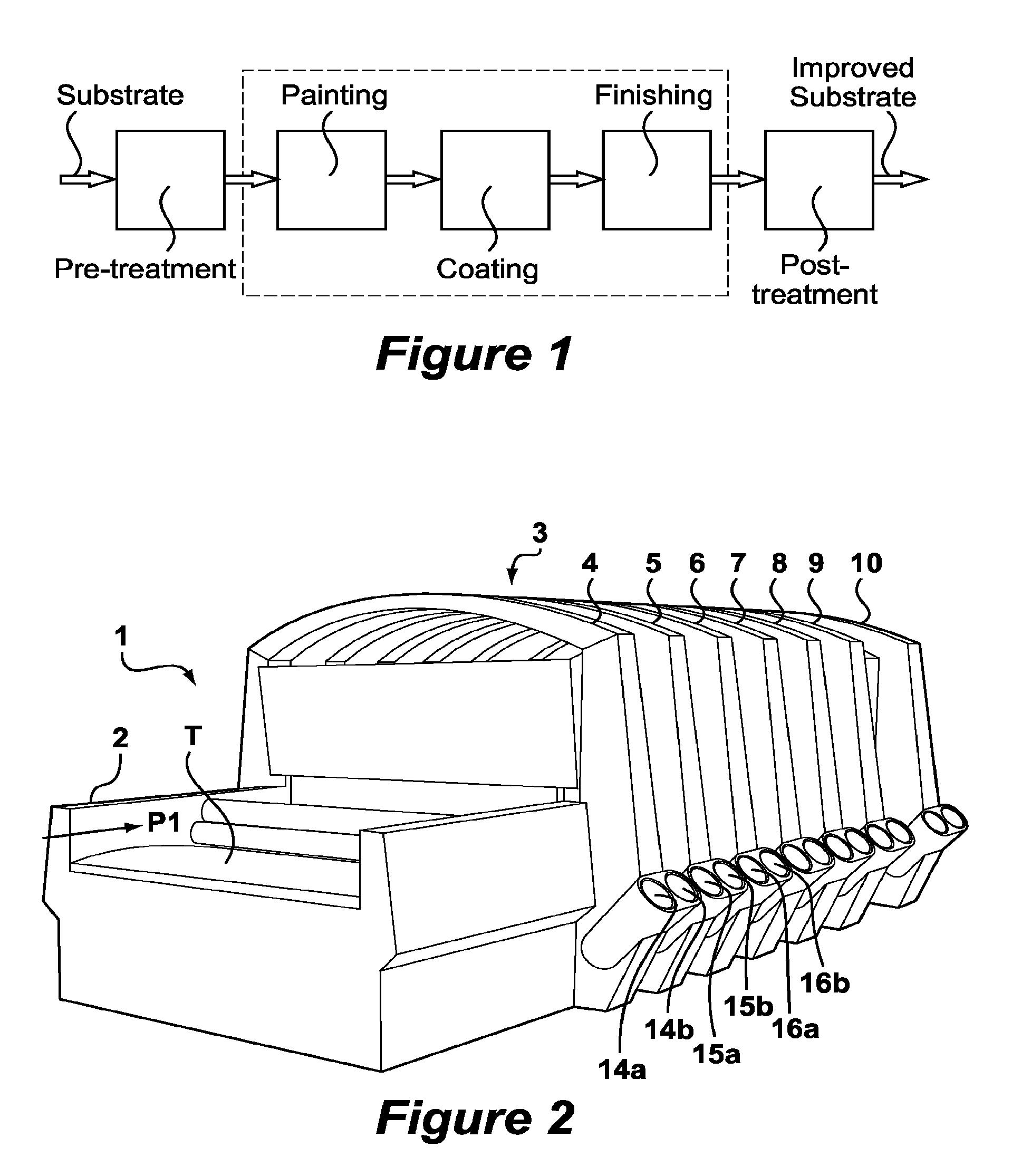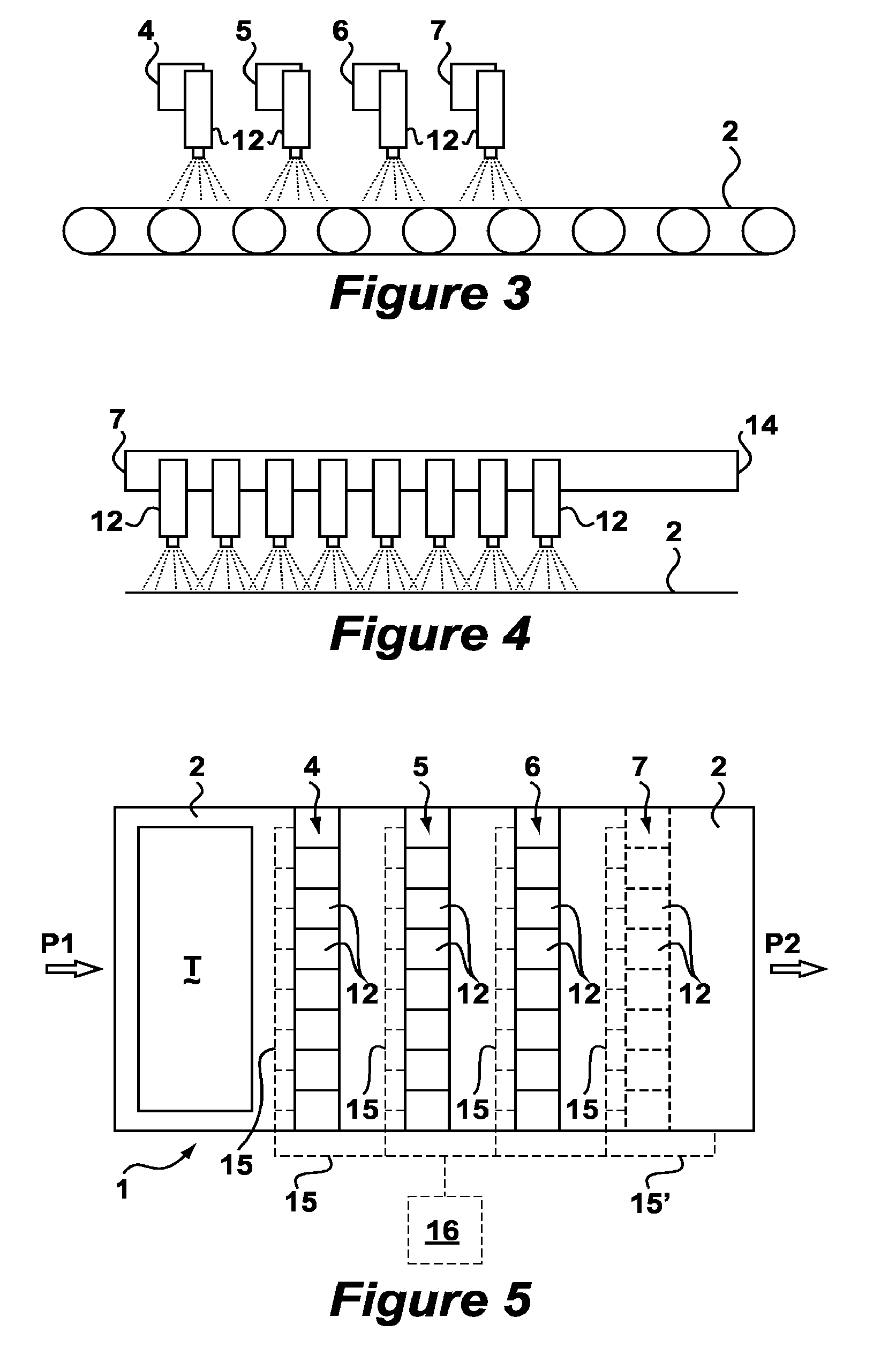Composition, method and device for digitally coating textile
a technology of textile and digital coating, applied in the direction of coating, article part treatment, transportation and packaging, etc., can solve the problems of free stretching or distorting, achieve the effect of/or its compatibility with other agents, reducing drying energy consumption, and improving the solubility of the finishing agen
- Summary
- Abstract
- Description
- Claims
- Application Information
AI Technical Summary
Benefits of technology
Problems solved by technology
Method used
Image
Examples
Embodiment Construction
[0073]The following is a description of certain embodiments of the invention, given by way of example only and with reference to the drawings. FIGS. 2-5 show a textile upgrader 1 according to a preferred embodiment of the invention. Textile upgrader 1 is built up of an endless conveyor belt 2 driven using electric motors (not shown). On conveyor belt 2 can be arranged a textile article T which can be transported in the direction of arrow P1 along a housing 3 in which the textile undergoes a number of operations. The textile is physically affixed to the conveyor by means of an adhesive to prevent shifting of the textile during the process. Finally, the textile is discharged in the direction of arrow P2 by release of the adhesive. A large number of nozzles 12 are arranged in housing 3. The nozzles are arranged on successively placed parallel beams 14. A first row 4, a second row 5, a third row 6 and so on are thus formed. The number of rows may vary (indicated in FIG. 5 with a dotted ...
PUM
| Property | Measurement | Unit |
|---|---|---|
| size | aaaaa | aaaaa |
| surface tension | aaaaa | aaaaa |
| surface tension | aaaaa | aaaaa |
Abstract
Description
Claims
Application Information
 Login to View More
Login to View More - R&D
- Intellectual Property
- Life Sciences
- Materials
- Tech Scout
- Unparalleled Data Quality
- Higher Quality Content
- 60% Fewer Hallucinations
Browse by: Latest US Patents, China's latest patents, Technical Efficacy Thesaurus, Application Domain, Technology Topic, Popular Technical Reports.
© 2025 PatSnap. All rights reserved.Legal|Privacy policy|Modern Slavery Act Transparency Statement|Sitemap|About US| Contact US: help@patsnap.com



